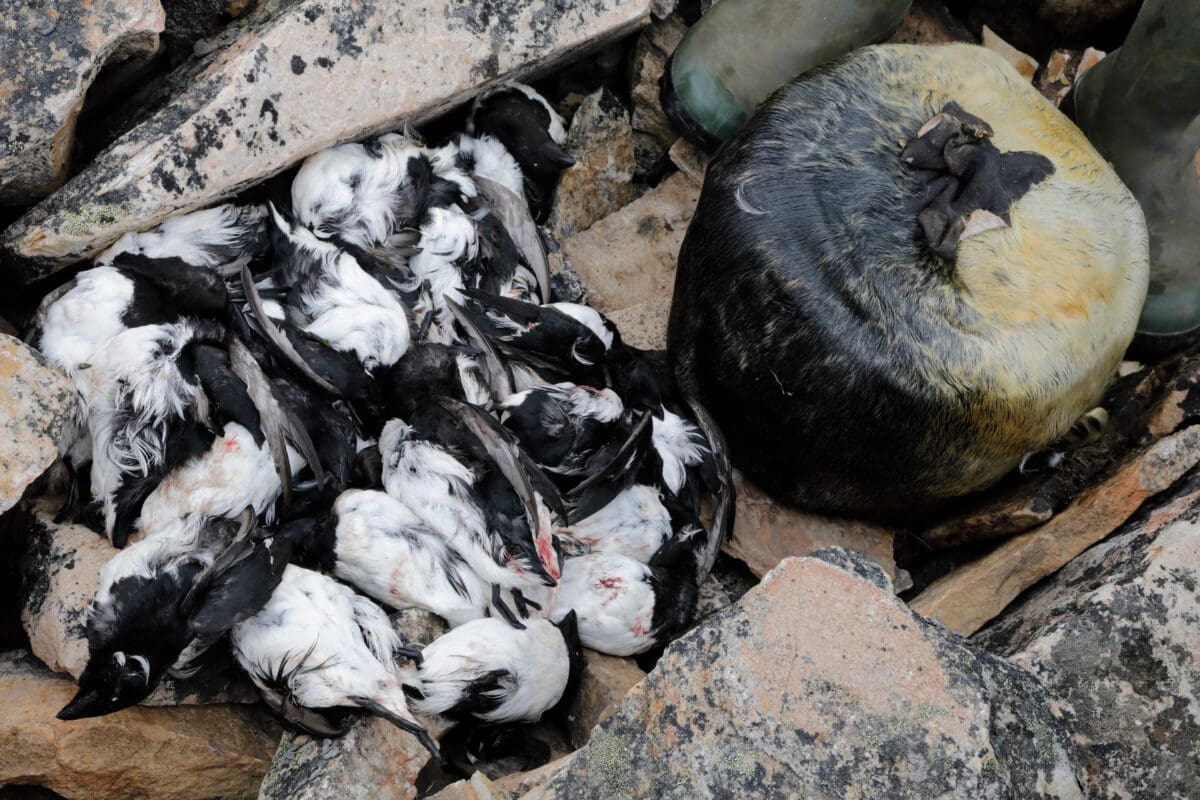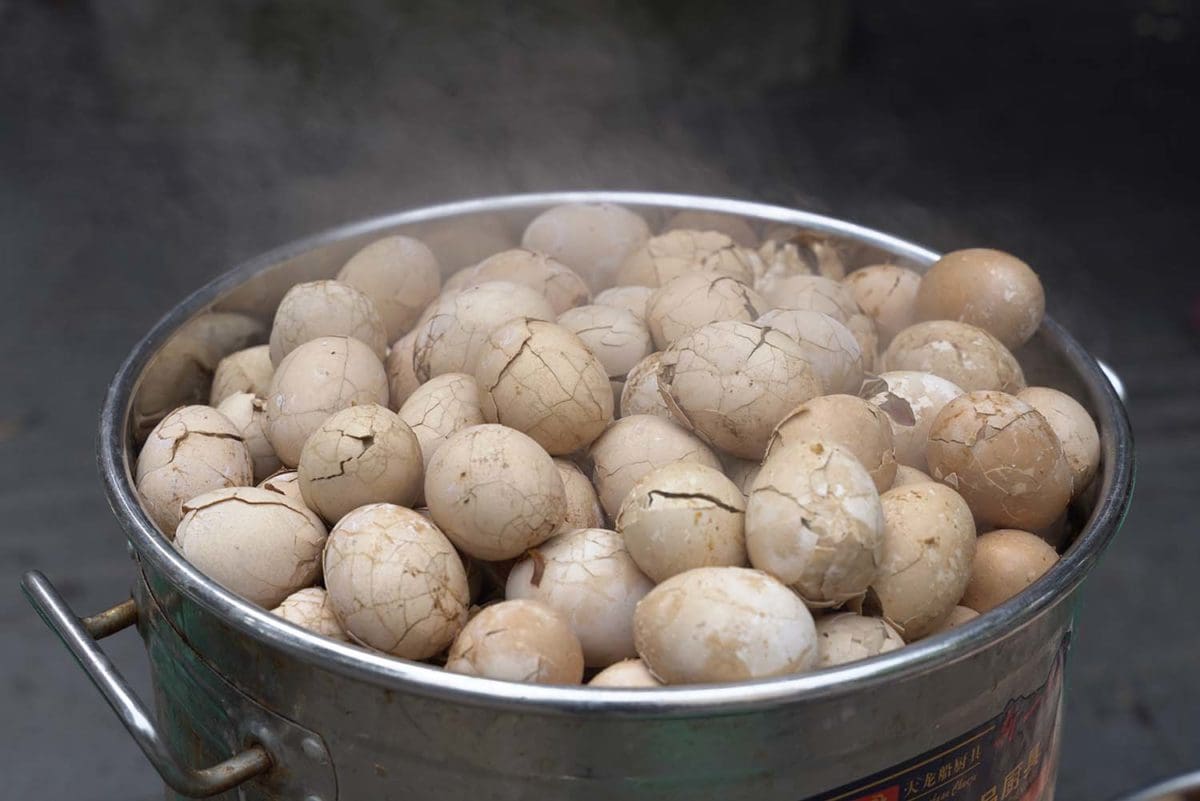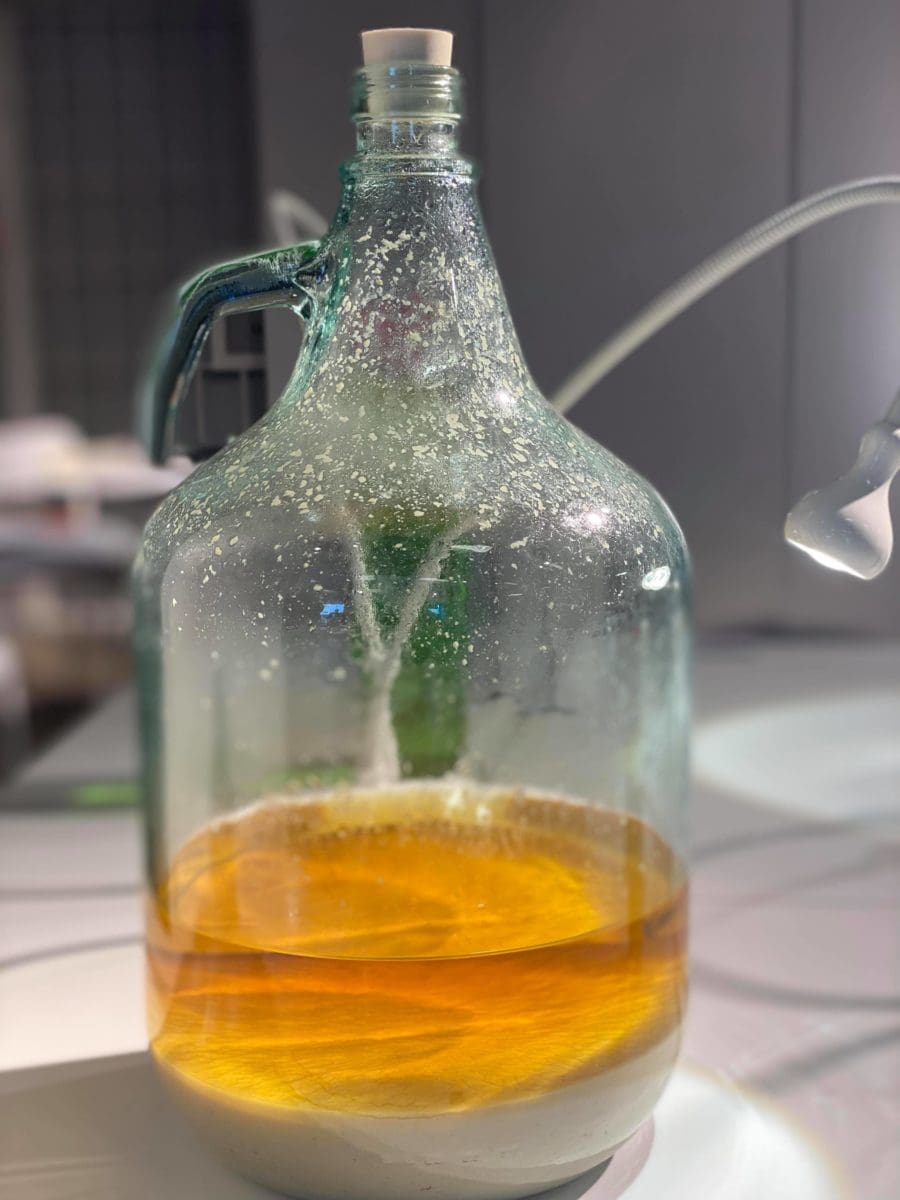Ttongsul is a traditional Korean medicine with a 9% alcohol content. The poo of a human child between 4 and 7 years old is refrigerated for 3-4 days, mixed with water, divided into smaller pieces, and fermented overnight. The vat with the poo starts to smell incredibly strongly of feces, even worse than the first day of fermentation. The poo/water mixture is poured through a sieve and is mixed with 70% boiled non-glutinous rice, 30% glutinous rice, and yeast. The non-glutinous rice contains a lot of protein, important for the fermentation process. The glutinous rice is there for its supposed anti-inflammatory and pain-relieving properties, as well as to improve the taste. The fermentation process activates the good bacteria and kills the bad bacteria.
The resulting mixture is left to ferment for at least seven days in a clay pot, wrapped in a blanket to maintain a temperature of 30 to 37 degrees Celsius. If not fermented enough, it’s dangerous to drink, but when perfectly ripe, this alcoholic drink is claimed to cure pain, broken bones, bruises, inflammation, and even epilepsy. The yellow-brownish liquid is strained and looks like a combination of sewer slime and vomit, potentially with small pieces of poo still floating around. The taste is a bit sour and similar to rice wine. Poo wine has a faint poo smell and can leave a poo smell on your breath. It contains about 9% alcohol. The smell and the visual appearance of this alcoholic drink are worse than the actual taste of it.
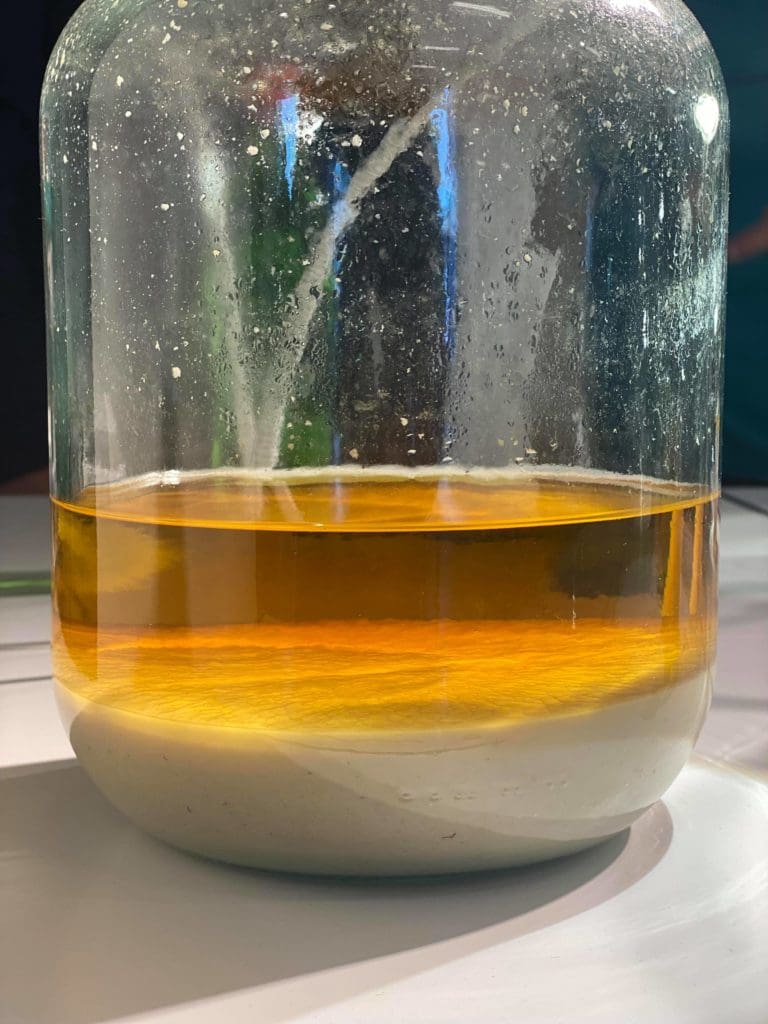
A different production method for making poo wine is pouring Soju, a distilled grain alcohol, Korean Rice Wine, into a pit of chicken, dog, other animal feces, or human feces, and leave it for months to ferment. Medicinal herbs and cat bones were also added, supposedly to improve health.
Is Ttongsul still used in the Korean medicinal system?
Ttongsul has a long history in Traditional Korean Medicine but is almost never made anymore in modern day South Korea. It is not part of the official Korean medicinal system as far as we have found. If you ask the average person in South Korea today about Ttongsul, they haven’t even heard about it, and have never tasted this ancient Korean drink. One of the few people that still know how to make Ttongsul is Dr. Lee Chang Soo, a Traditional Korean Medicine doctor. He was interviewed in VICE and showed a reporter how to make poo wine. He has mentioned an old Korean saying, “Even dog feces is never around when you want it”, meaning when you need it for fertilization or for making whine. Different types of feces wine were used as a cure in Korea hundreds of years ago. Bat feces were used to treat alcoholism, chicken feces for stomach illness. Dr. Lee Chang Soo specialized in traditional medicine like Ttongsul in South Korea and gets donations of human child feces regularly from his patients.
The VICE video about Ttongsul has gotten plenty of criticism, therefore we feel that it’s important to highlight once again that Ttongsul is in no way something that is used in modern day South Korea. It was an unusual cure one hundred years ago, and even more so today.
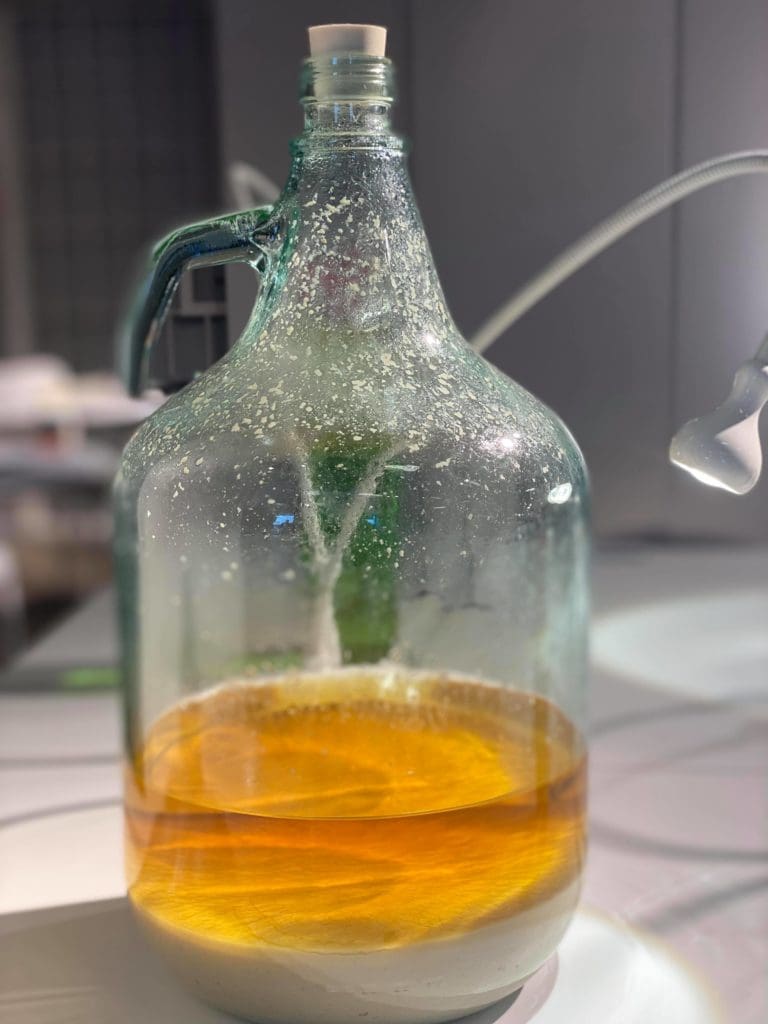
Mentions of Poo wine and human feces in Traditional Chinese Medicine
Li Shizhen, a Chinese medical scientist in the Ming Dynasty, mentioned in his book Compendium of Materia Medica a Chinese medicine handbook from 1596:
人屎釋名人糞、大便。氣味苦,寒,無毒。主治時行大熱狂走,解諸毒,搗末,沸湯沃服之。傷寒熱毒,水漬飲之,彌善。新者,封疔腫,一日根爛(蘇頌)
“Humans release celebrity feces and stool. The smell is bitter, cold, and non-toxic. For people who have gone mad, or to detoxify all kinds of poisons, smash the powder, boil the soup and take it. Typhoid fever and poison, drink water stains, it will make you good. The new one, the boil is swollen, and the root is rotten in one day (Su Song).
He also mentioned:
童便氣涼撲損瘀 虛勞骨蒸熱嗽除
“Children’s feces possesses cooling properties, for falls, cuts and bruises. Cures fatigue and cough”.
The Compendium of Materia Medica from the 16th century mentions several instances of fecal matter and urine, from both humans and various animals, as a cure to all sorts of illnesses and weaknesses. Eastern medicine as a whole has taken some inspiration from this ancient book. It is likely that the poo wine from Korea is derived from this book in some way.
The 4th-century Chinese medicine handbook by Chinese Ge Hong describes consuming human feces as a way of treating food poisoning and diarrhea. Equine feces was believed to have medicinal efficacy in Japan and have been traditionally used as a therapy since the Sengoku period in the 16th century.
You can see Ttongsul and other disgusting alcohols in our alcohol exhibit
En rad aktörer inom besöksnäringen, med ledning av Malmö turism, samarbetar för att lyfta Malmö som besöksmål. Under helgen 2-4 oktober går Weekend for Love av stapeln med kulturupplevelser som gör Malmö speciellt. Disgusting Food Museum deltar med bland annat den nya alkoholutställningen. Biljetter går att boka som en del av de hotellpaket som utformats.
Weekend for Love är ett samarbete mellan Malmö turism, hotell i Malmö, Malmö Live konserthus, Destinationssamverkan i Malmö AB och Disgusting Food Museum.
Helgen baseras på de utmaningar som besöksnäringen ställts inför på grund av coronapandemin och hur allvarligt besöksnäringen drabbats. Weekend for Love, 2-4 oktober, ska locka fler besökare till Malmö på ett säkert sätt.
– Jag vet ingen annan stad i Sverige som gått samman på det här sättet under denna coronaperiod. Genom att nu inte bara vi hotell, utan även museer, konserthus och mataktörer samarbetar, kommer vi nå ut till potentiellt väldigt många kunder, säger Jens Lyckman, VD för Clarion Malmö Live och talesperson för Hotellgruppen i Malmö.
Konceptet Weekend for Love byggs upp kring klubb- och dansmusikkonserten Waiting for love på Malmö Live Konserthus. Där framträder bl a artisterna Paul Rey och Naomi Wiehe tillsammans med kören Released, som nyligen samplades av självaste Pharell Williams. Artisterna framför låtar av bland annat Avicii och Robyn, och konserten kommer att livestreamas exklusivt på samtliga hotell. När nu Folkhälsomyndigheten dessutom säger ja till 500 i publiken, kommer också intresserade att kunna köpa en live-biljett.
Suget efter upplevelser och samarbeten tycks vara stort i Malmö, och många parter har anslutit sig till pilotprojektet. Till exempel kan besökaren få lära sig att bl a laga Yalla Trappans falafel, käka brunch på Boulebar, se den unika föreställningen av Hilma af Klint och besöka Disgusting Food Museum. Genom pilotprojektet hoppas de medverkande att prova, och eventuellt kunna ta fram nya ekonomiska modeller och arbetsformer. Syftet är också att öka samarbetet i staden, stärka stadens attraktivitet och – viktigt – att bli mer förberedda om liknande situation med corona uppstår igen.
– För Malmö Turism är det därför ett självklart projekt att stötta och medverka i. Det går helt i linje med vårt uppdrag, säger Ann Nyström, destinationschef Malmö Stad.
Om du bokar paketet kan du bo på hotell, se konserten Waiting for Love via streaming på hotellrummet, och ta del av de andra aktiviteterna som ingår.
Medverkande parter är:
Moment Hotels
Quality Hotel View
Scandic Triangeln
Clarion collection Hotel Temperance
Clarion Malmö Live
Radisson Blu
Bestwestern Royal Hotel
Malmö Arena Hotel
Elite Hotel Esplanade
Bestwestern Noble House
Goodmorning Hotels
För ytterligare information, kontakta:
Karin Tingstedt, Projektledare Evenemang
Malmö Turism
Mob. +46 (0)708 63 30 83
karin.tingstedt@malmo.se

Du kan läsa mer om Weekend for Love och boka på https://malmo.se/wfl
Disgusting Christmas Foods
Every country has its own Christmas traditions. We listen to different Christmas music, have our own Christmas games – and of course traditional Christmas foods that are specific to our region. Here we have collected a few of the most disgusting Christmas foods from all over the world.
Christmas Eve Carp

Fresh food is always better, right? In Slovakia, Poland, and Czechia, living carps are bought before Christmas and kept in the bathtub for several days until it is eaten. It’s a symbol of good luck and a traditional meat-free meal in Central Europe. It probably started as a way to keep the fish fresh in the days before refrigeration.
It is claimed that keeping the fish in the bathtub also helps remove mud from the digestive tract of the carp, but experts claim that it would take much longer.
The temporary pet is later killed, cleaned and soaked in milk before breading and frying it, often served with cabbage or fish soup. The scales are often kept in the wallet of family members after Christmas for good luck. Some Jewish families also keep fish in bathtubs and use them for making gefilte fish for Passover and Rosh Hashanah. It is not that common anymore but was featured in the 1972 children’s book “The Carp in the Bathtub”.
Kiviak
A freshly disemboweled seal is stuffed with up to 500 small arctic birds. It is then sewn shut and sealed with seal fat to prevent flies from getting in. The birds are buried and left to ferment in the carcass for 3 to 18 months. Kiviak is eaten by biting off the bird’s head and then sucking out the juices inside, but the birds can also be eaten whole, bones and all. It is especially popular during the arctic winter celebrations, especially during Christmas.
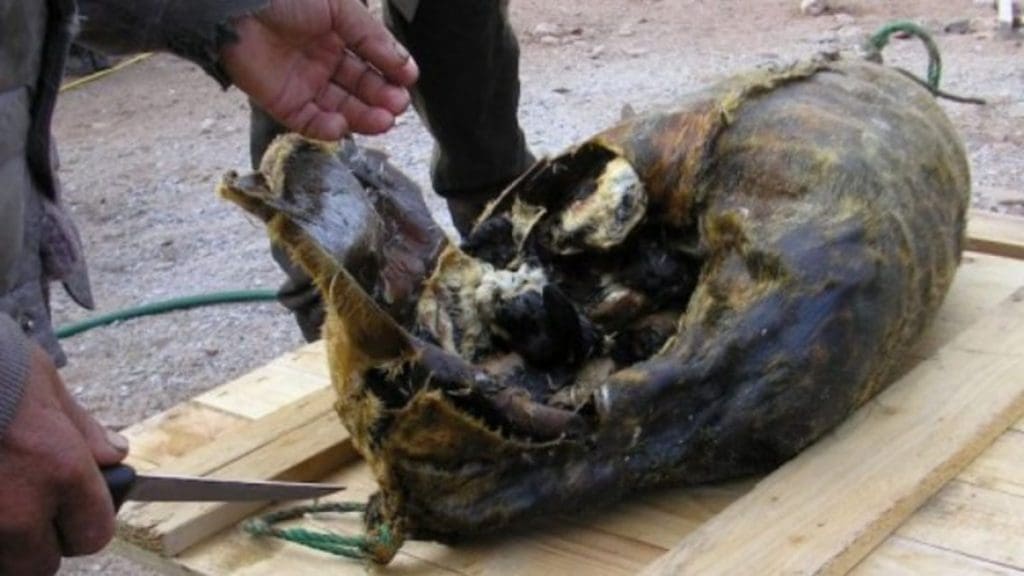
Another popular Greenland Christmas delicacy is Mattak, whale skin with a bit of blubber inside. People say it tastes like coconut, but the skin is very tough to chew and most people just swallow it whole. It was originally is served raw, now it’s more commonly consumed breaded, deep-fried or pickled.
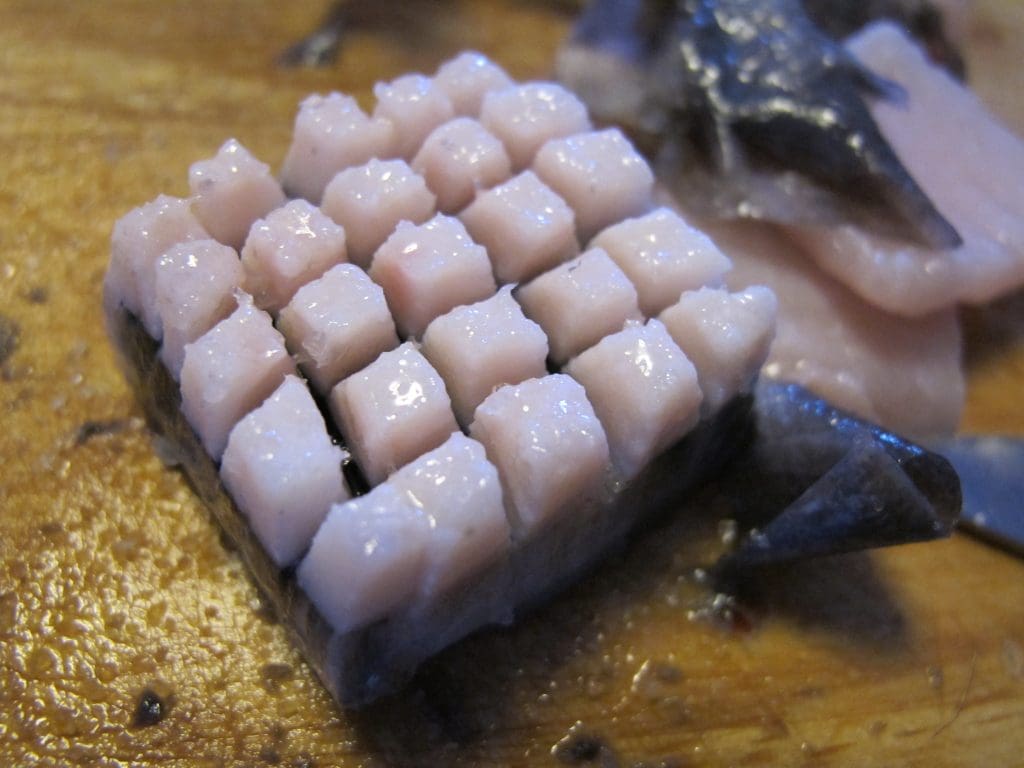
Lutefisk/Lutfisk
Lutefisk (Norway) or Lutfisk (Sweden) is made from aged stockfish or dried and salted whitefish, and lye. It’s gelatinous, smelly and pretty nasty tasting, though the enthusiasts love it. The name translates to “lye fish”.
The stockfish is soaked in cold water for five or six days, with daily water changes. Then it’s moved to a mix of cold water and lye for another two days, swelling the fish, reducing the protein content by 50%, and making the consistency jelly-like.
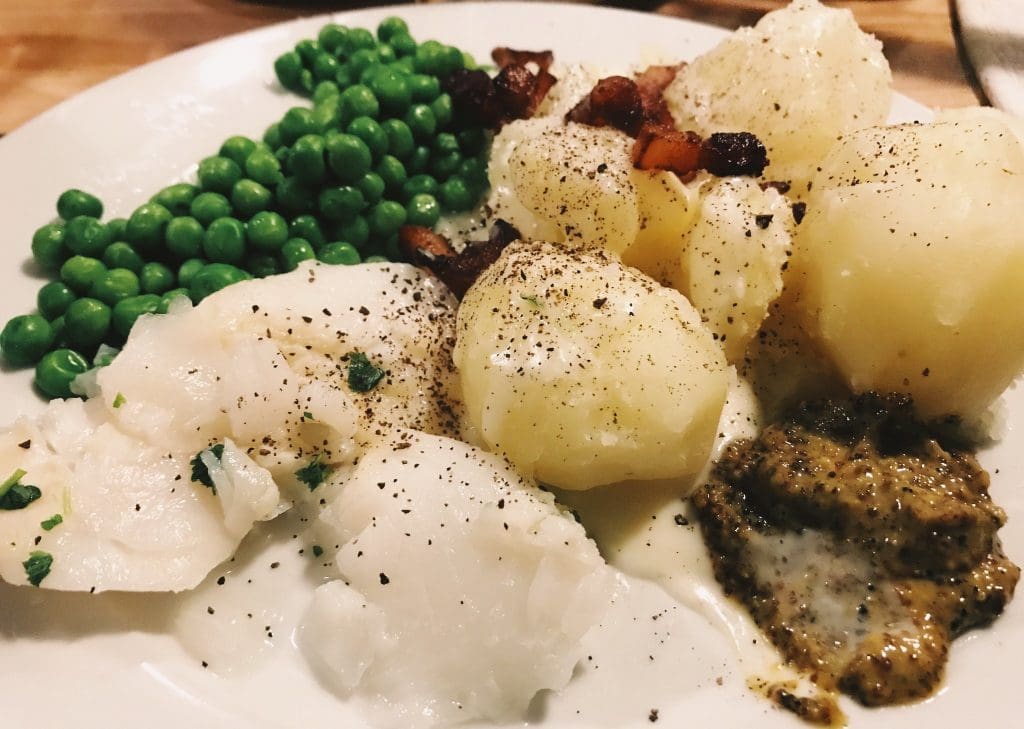
After this process is done, the lye saturated fish is caustic and unedible. Finally, it’s soaked in cold water again for up to six days to render it (more or less) suitable for human consumption. When cooking and eating lutefisk, the fish and all residue must immediately be removed from plates, cutlery and frying pans. If left dirty, the fish will be impossible to remove. Sterling silverware will be permanently corroded if it comes into contact with lutefisk, so stainless steel is required.
Lechon
Perhaps the tastiest disgusting Christmas food on this list is Lechon from the Philippines. Pigs are butchered and then the hair is removed by singing or scalding it. The belly is opened and intestines removed, its place taken by herbs and seasoning. The skin is rubbed with coconut water, milk, or soy sauce before letting the pig roast over coal on a spit for up to five hours. The resulting delicacy was called the “Best pig ever” by Anthony Bourdain.

The Philippines loves Christmas and is home to the longest Christmas season in the world. September 1 is the first day of Ber-season, the months that end with -ber, and the start of Christmas. For four months, every mall in the country plays Christmas songs and is covered in holiday decorations.
Holodets
Holod means cold in Russian and this is a meat jelly made by cooking pork parts that contain a lot of bone, skin, and cartilage (such as legs, ears, and even hooves), then chicken is added to make a soup that chills into a jelly-like texture. Also known as Aspic, it predates Jell-O by several decades. The meat broth thickens when it cools into a not so appetizingly looking lump of jelly. The polish version is called Zimne Nóżki.

Cuscuz Paulista
This cold cake is made from corn flakes or cornmeal, tomato sauce, tomato pieces, boiled egg, and canned ingredients such as peas, green corn, olives, and sardines. Thanks, Bruno Garin for letting us know about it! It’s a traditional Christmas dish from São Paulo in Brazil.
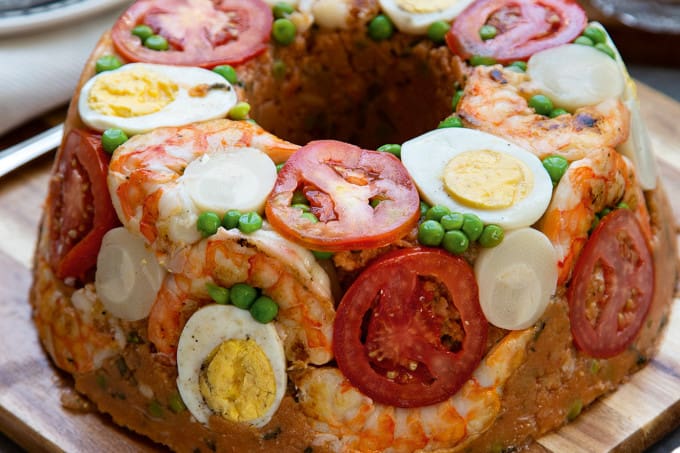
KFC for Christmas
In 1974, KFC took advantage of the fact that turkey was is not readily available in Japan and started advertising chicken for Christmas. The idea took off and it has become a real Japanese custom to eat at KFC for Christmas. This is the only country where the fast-food outlet offers a set meal for Christmas (which includes cake and champagne along with the famous fried chicken). Even though it is ordered in advance, there are long lines waiting for the Colonel on Christmas Day.

Egg Nog
Egg nog is the Vegemite of the alcoholic Christmas beverages – you love it or you hate it! Egg nog started as an aristocratic drink in the 1800s, when eggs, milk, and sherry where all expensive, so nog was used to toast to prosperity and good health.
Raw egg makes the consistency close to mucus but on a positive note, adding alcohol seems to kill salmonella in most cases. However, in 1981 most of the staff and residents of a nursing home in the US became ill after drinking homemade egg nog. Four people died. Thanks, egg nog.
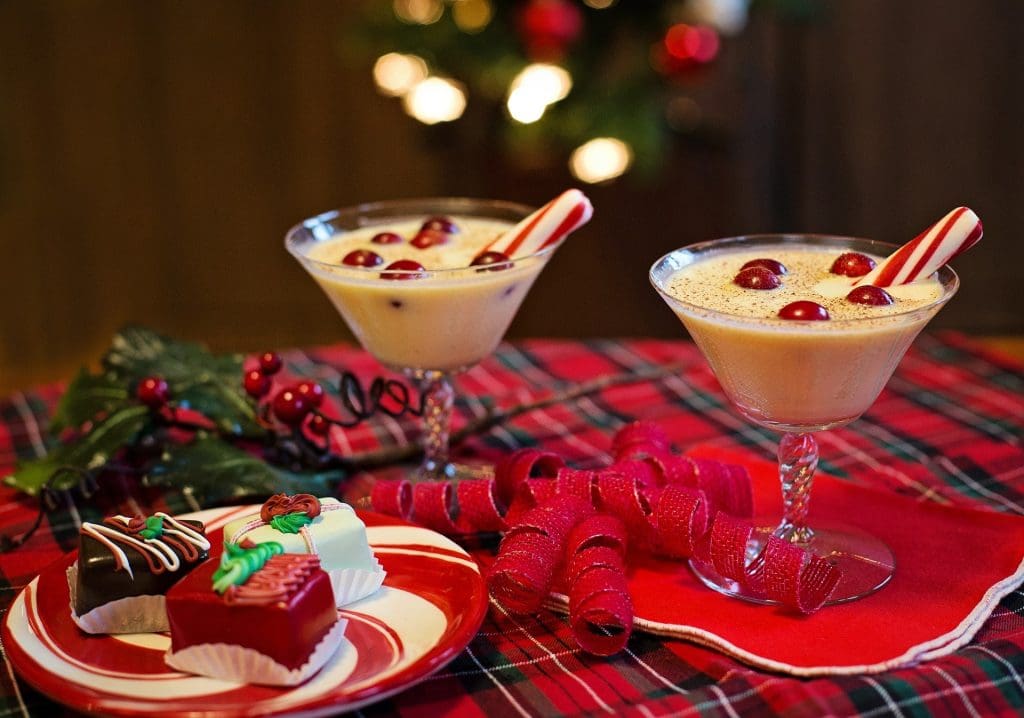
Mopane worms
One of the Christmas foods of choice in Southern Africa is mopane worms, the caterpillar of the Emperor Moth. The ideal harvesting season for these protein-rich maggots is around Christmas, but they are eaten throughout the year. The yellow flesh has been described as tasting just like salty potato chips, or a mix of leaves, earth and salt. Only 3 kg of feed is needed to produce 1 kg of worms.
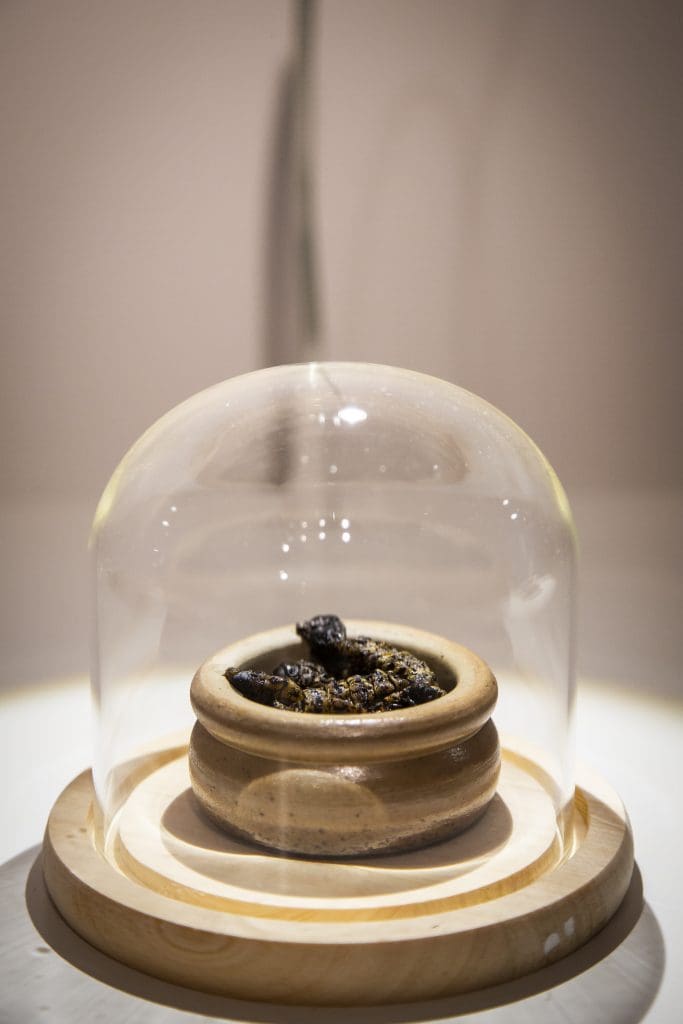
Trim-a-Tree Dip
It wouldn’t be a complete list of disgusting Christmas foods without at least one odd retro recipe. Meet the Trim-a-tree dip. You mix cream cheese, cheddar cheese, blue cheese, Worcestershire sauce, and minced onion. Chill the mixture and shape it into a Christmas tree. Decorate it and surround it with Whistles, Bugles, and Daisies.
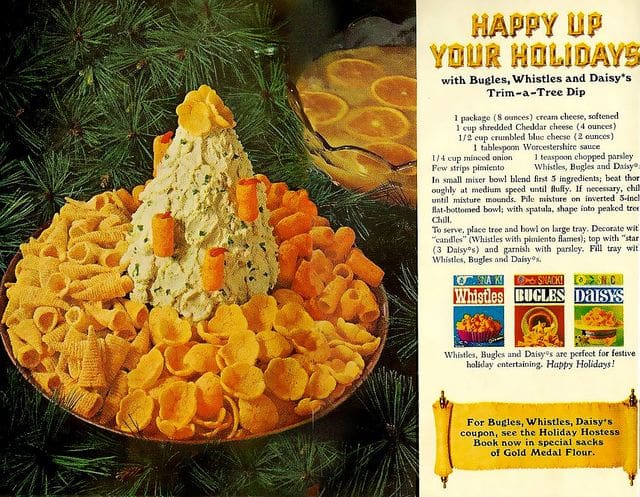
Christmas Tinner
Last up, a more modern type of craziness – the video game retailer GAME in the UK sells Christmas Tinner every year, a full Christmas dinner in a can. They started selling them in 2013 and has now added a vegan and a vegetarian option.

The Christmas Tinner layer list in full:
Layer one – Scrambled egg and bacon
Layer two – Two mince pies
Layer three – Turkey and potatoes
Layer four – Gravy
Layer five – Bread sauce
Layer six – Cranberry sauce
Layer seven – Brussel sprouts with stuffing – or broccoli with stuffing
Layer eight – Roast carrots and parsnips
Layer nine – Christmas pudding
The tin will run you £2, but sadly it’s currently out of stock.
Would you like to visit the Disgusting Food Museum and see some of these delicious foods? Book your ticket below!


